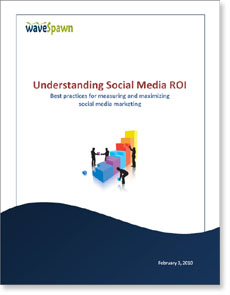Respecting privacy with social media
 Facebook and social media are great outlets for people to vent with friends. People go online to complain about the weather (especially here in Western New York), sports teams, a bad day, boredom, etc… but what are the rules of the discussion? Are there any topics that are off limits – politics, religion, or personal matters?
Facebook and social media are great outlets for people to vent with friends. People go online to complain about the weather (especially here in Western New York), sports teams, a bad day, boredom, etc… but what are the rules of the discussion? Are there any topics that are off limits – politics, religion, or personal matters?
A doctor from Rhode Island just found out the hard way that patient privacy is definitely not a topic that should be shared publicly through social media. “Dr. Alexandra Thran, 48, was fired from the hospital last year and reprimanded by the state medical board last week. The hospital took away her privileges to work in the emergency room for posting information online about a trauma patient.” While Dr Thran’s post did not actually include the patient’s name, apparently enough facts were included for others in the community to properly identify the individual.
While this may seem obvious to some, to others discussing their daily grind is a normal routine. There can be a lot of gray area for appropriate content. There comes a time when common sense should prevail. If you are not sure about something you are about to post, you probably shouldn’t be clicking submit. I’ve often thought about launching the social media hall of shame – to showcase social media bloopers and blunders. They are everyday occurrences. Just a few years ago the biggest concern was clicking “reply all” to an email. Now a simple post or tweet has trumped the old school email.
There is a lot to be learned from this Rhode Island case. I’m sure much of the healthcare industry is taking note and working to implement training programs and education for appropriate use of social media. With liability concerns, health privacy issues (HIPAA), and reputation there is a lot at stake for health facilities. It’ll be interesting to see how other healthcare institutions react to this occurrence.



 Have you ever noticed how many business-related social media accounts have little, if any, postings or messages? You know the ones… they hastily ran out and setup a corporate Facebook, Twitter, YouTube, and blog account without a plan or clue as to what they were doing. Somewhere along the way they strayed from logic. It’s as if they’re proclaiming “hey we’re not only slackers, but we’re cutting edge slackers.”
Have you ever noticed how many business-related social media accounts have little, if any, postings or messages? You know the ones… they hastily ran out and setup a corporate Facebook, Twitter, YouTube, and blog account without a plan or clue as to what they were doing. Somewhere along the way they strayed from logic. It’s as if they’re proclaiming “hey we’re not only slackers, but we’re cutting edge slackers.”
 I’ve been an avid user of Gmail for the past six years. Yesterday I was reading all about Google Buzz and their attempt to succeed in the social media frenzy. Sure enough when I logged into my Gmail account, I saw the “Buzz” icon right below my inbox… so naturally I clicked on it. Wow, I already have several people following me and following several people. Apparently, I’m connected with everyone in my address book. Since Google Buzz integrates with Gmail without the need for users to sign up, Google instantly added 176 million users to their social network platform… not too shabby of a start.
I’ve been an avid user of Gmail for the past six years. Yesterday I was reading all about Google Buzz and their attempt to succeed in the social media frenzy. Sure enough when I logged into my Gmail account, I saw the “Buzz” icon right below my inbox… so naturally I clicked on it. Wow, I already have several people following me and following several people. Apparently, I’m connected with everyone in my address book. Since Google Buzz integrates with Gmail without the need for users to sign up, Google instantly added 176 million users to their social network platform… not too shabby of a start. For many small businesses, measuring the return on investment (ROI) for social media is a mystery. While some of these businesses actively engage in blogging, tweeting, and perhaps even Facebook, they have no idea on how to gauge the effectiveness of their efforts. The remaining businesses that have not entered the social media frenzy are hesitant to get started because they too are looking for an accurate method of determining the ROI or impact of their social campaigns.
For many small businesses, measuring the return on investment (ROI) for social media is a mystery. While some of these businesses actively engage in blogging, tweeting, and perhaps even Facebook, they have no idea on how to gauge the effectiveness of their efforts. The remaining businesses that have not entered the social media frenzy are hesitant to get started because they too are looking for an accurate method of determining the ROI or impact of their social campaigns.